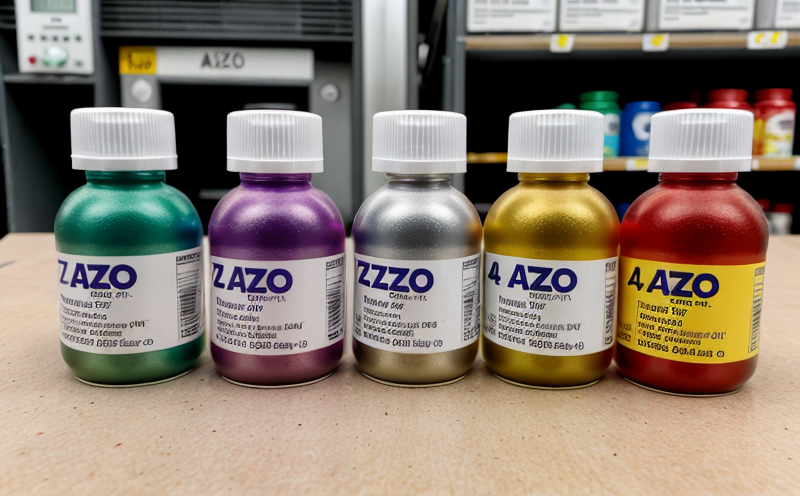ISO 14362-3 Detection of banned azo dyes in polyester fibres
The ISO 14362 series is a comprehensive set of standards aimed at ensuring the safety and quality of textile products. Specifically, ISO 14362-3 focuses on detecting banned azo dyes within polyester fibres, which are known to release harmful aromatic amines upon degradation. This service is critical for industries that handle textiles such as clothing, home furnishings, and personal care items.
The presence of these banned azo dyes can lead to adverse health effects when exposed to the skin over prolonged periods. Regulatory bodies around the world have implemented stringent measures to prevent the use of such harmful chemicals in textile products. This service helps manufacturers and suppliers comply with international standards and ensure product safety.
The test procedure outlined in ISO 14362-3 involves several steps, including sample preparation, extraction of azo dyes, and analysis using high-performance liquid chromatography (HPLC) or similar analytical techniques. The primary goal is to identify whether the extracted dyes are listed as banned under relevant regulations such as REACH.
Our laboratory adheres strictly to this protocol to ensure accurate results. We utilize state-of-the-art instrumentation and trained personnel to guarantee reliable detection of even trace amounts of banned azo dyes. Compliance with ISO 14362-3 is essential for maintaining product integrity, avoiding potential legal issues, and safeguarding consumer health.
The impact of this service extends beyond mere compliance; it contributes significantly to the sustainability efforts of textile manufacturers. By identifying and eliminating harmful chemicals early in the production process, we can help reduce environmental contamination and promote safer working conditions throughout the supply chain.
Our expertise lies not only in executing the test according to ISO standards but also in providing actionable insights into how to mitigate risks associated with banned azo dyes. This includes offering guidance on alternative dyeing processes or material substitutions that align with current regulatory requirements.
Why Choose This Test
- Ensure compliance with international regulations such as REACH and Oeko-Tex standards.
- Protect brand reputation by preventing the use of harmful chemicals in your products.
- Enhance consumer trust through transparent product safety practices.
- Stay ahead of regulatory changes and emerging trends in textile chemistry.
- Gain competitive advantage by demonstrating a commitment to quality and sustainability.
Quality and Reliability Assurance
Our laboratory is dedicated to delivering accurate, reliable results that meet or exceed the requirements specified in ISO 14362-3. We employ rigorous quality control measures at every stage of the testing process, from sample collection to final analysis.
Our team consists of certified professionals with extensive experience in textile chemistry and analytical techniques. They are equipped with advanced instrumentation including HPLC systems that ensure precision and repeatability in detecting azo dyes even at very low concentrations.
We follow strict protocols for sample preparation, extraction, and analysis to minimize any potential sources of error. This includes using validated methods for extracting azo dyes from polyester fibres, ensuring consistent results across multiple samples.
Once the test is completed, we provide detailed reports that not only indicate whether banned azo dyes were detected but also offer recommendations on corrective actions if necessary. These reports are designed to be easily understood by both technical and non-technical stakeholders within your organization.
Use Cases and Application Examples
| Use Case | Description |
|---|---|
| Dyeing and Printing Processes | Identify banned azo dyes before they are incorporated into final products to avoid non-compliance issues. |
| Supplier Audits | Perform regular audits on suppliers to ensure they adhere to strict regulatory requirements regarding the use of harmful chemicals in textiles. |
| New Product Development | Determine whether new dyeing techniques or materials are free from banned azo dyes during product development stages. |
| Post-Market Surveillance | Conduct tests on existing products to check for the presence of banned azo dyes after they have been released into the market, especially if there has been a change in supply chain or manufacturing processes. |
| Compliance Audits | Support internal and external audits by providing robust evidence that your company’s products meet all relevant standards regarding banned azo dyes. |
| Risk Management | Implement risk management strategies early in the product lifecycle to minimize exposure to potential legal liabilities related to banned chemical use. |





